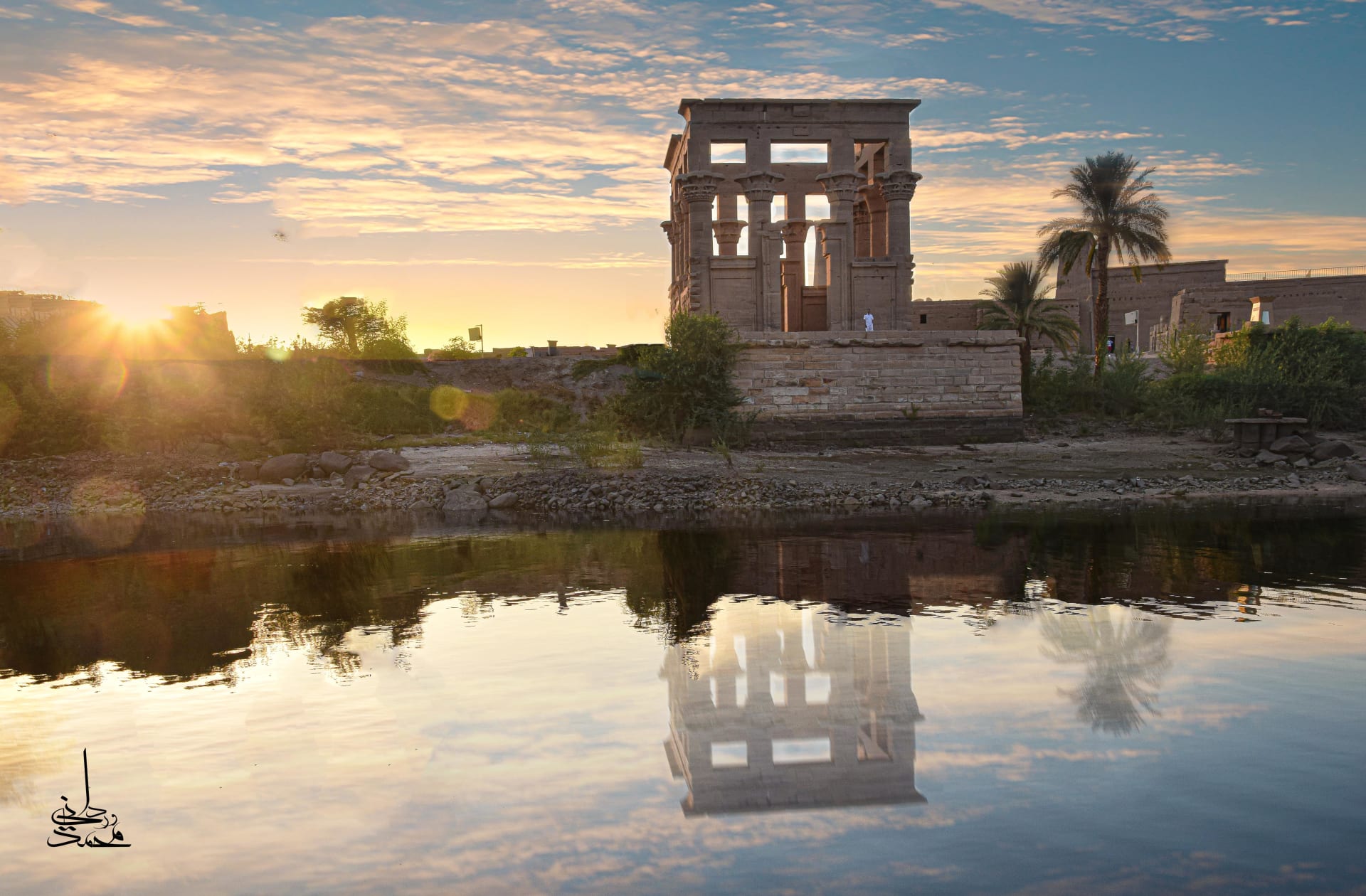Philae Temple: An Architectural Jewel in the Heart of the Nile
Philae Temple is located in one of the most beautiful sites in Egypt, on Philae Island in Aswan. It is one of the most prominent archaeological landmarks that embody the grandeur of ancient Egyptian civilization. The temple was built in honor of the goddess Isis, one of the most significant deities in ancient Egyptian religion, and it stands as a brilliant example of the architectural and religious mastery of that era.
History of the Temple
The construction of Philae Temple dates back to the Ptolemaic era (332-30 BCE), with work beginning during the reign of King Ptolemy II and continuing into the Roman era. The temple was dedicated to the worship of the goddess Isis, who symbolized motherhood, love, and healing. Over the centuries, the temple continued to play a religious and cultural role. Even after the advent of Christianity in Egypt, some parts of it were converted into a church.
Location and Significance
Philae Temple is situated on an island in the Nile between the Aswan High Dam and the old Aswan Dam. Its original location was threatened by flooding due to dam construction. However, thanks to UNESCO's efforts in the 1960s, the temple was relocated to the nearby Agilkia Island. The relocation process took several years and involved dismantling the temple and moving it piece by piece, then reassembling it with precision.
Architectural Design
Philae Temple consists of a collection of buildings and monuments that reflect the engineering and artistic brilliance of the ancient Egyptians. The design features a grand entrance leading to an open courtyard surrounded by columns adorned with carvings depicting religious scenes and myths related to the goddess Isis. Key features of the temple include:
-
The Main Pylon: The grand entrance of the temple, featuring prominent carvings of kings offering sacrifices to the gods.
-
The Hypostyle Hall: A hall with intricately decorated columns featuring floral capitals and detailed carvings that narrate religious stories.
-
The Sanctuary: The most sacred part of the temple, housing statues of the goddess Isis.
-
Auxiliary Structures: These include the Temple of Hathor and the Birth House, which was used for royal celebrations.
The Myths of Goddess Isis
Philae Temple is closely associated with the myth of Isis and Osiris, one of the most famous tales in ancient Egyptian mythology. The myth narrates Isis's profound love for her husband Osiris and her quest to resurrect him after his murder by his brother Seth. The temple illustrates this story through the carvings and symbols adorning its walls.
Challenges and Preservation
Philae Temple faced the threat of submersion when the High Dam was constructed, leaving the island submerged most of the year. However, an international rescue project led by UNESCO ensured the temple's survival by relocating it to Agilkia Island. This relocation is considered one of the greatest achievements in heritage preservation. The temple was meticulously reconstructed to resemble its original location, allowing visitors to experience its magic as it once was.
Philae Temple Today
Today, Philae Temple is a major tourist destination attracting visitors from around the world. Visitors can enjoy a boat ride to the island to explore the temple and learn about its history and mysteries. Evening sound and light shows add a magical atmosphere to the experience.
Cultural and Touristic Significance
Philae Temple is more than an archaeological site; it is a symbol of Egyptian cultural identity. The temple contributes to promoting cultural tourism in Aswan and highlights the importance of preserving historical heritage. It is also a source of inspiration for artists and historians who draw upon its beauty and symbolism.
Conclusion
Philae Temple is a living testament to the genius of the ancient Egyptians and their ability to merge art and religion seamlessly. Thanks to international and local efforts to preserve it, the temple remains an enduring symbol of beauty and history. Visiting Philae Temple is not just a journey into the past but an enriching experience that deepens one's understanding of human civilization.


